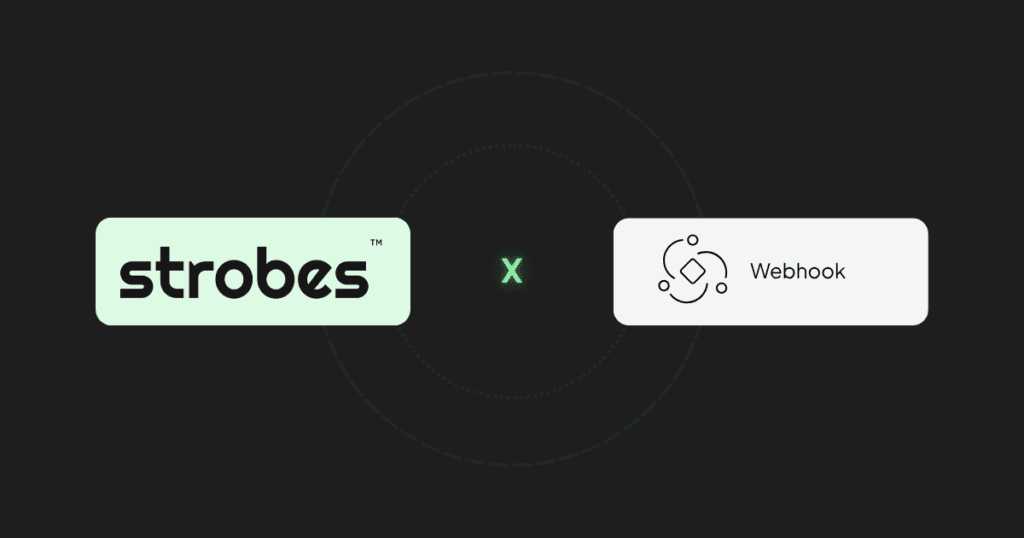When dealing with vulnerability management at scale, flexibility matters. Security teams often face limitations when working with pre-built integrations that don’t support custom or in-house systems.
Whether it’s an internal alerting engine, compliance monitoring system, or a homegrown DevSecOps platform, there’s always a need to push contextual security data to tools outside the conventional ecosystem.
This is where Strobes’ custom webhook integration becomes a practical enabler. It opens up a direct and programmable channel for pushing enriched security events from Strobes to any external system that supports HTTP POST requests securely, in real time, and in your preferred data structure.
This blog breaks down how the custom webhook feature works, what it enables, who benefits the most, and why it’s a foundational capability for teams running mature, distributed security operations.
One Platform Can’t Cover Every Tool
Enterprise security stacks are diverse. In addition to using vulnerability scanners like Nessus or Qualys, and ticketing tools like Jira or ServiceNow, teams often rely on:
- Custom-built alert routers
- Proprietary compliance databases
- In-house dashboards
- Automation and orchestration systems tailored to their organization
These tools don’t always have ready-made integrations. This gap becomes a problem when time-sensitive security data, like a critical vulnerability or SLA breach, needs to move instantly to these internal platforms.
Delays, manual workarounds, or brittle scripts aren’t sustainable in a production environment.
What Are Webhooks and Why Are They Useful?
A webhook is a simple yet powerful mechanism that allows one system (Strobes) to send real-time data to another system (your tool) when a predefined event occurs. It operates on a “push” model using HTTP POST, making it lightweight and instant.
Here’s how it works:
- You define an event trigger in Strobes (e.g., new critical vulnerability).
- You link it to a target URL (your system’s endpoint).
- When the event occurs, Strobes sends a structured JSON payload to that endpoint.
The receiving system can then log the data, trigger workflows, raise alerts, or anything else your backend is designed to do.
Supported Use Cases for Strobes Webhooks
Webhooks are ideal for several scenarios, including but not limited to:
| Use Case | Description |
| Internal Alerting Systems | Push findings to in-house tools that manage security alert routing. |
| Custom SIEM Connectors | Forward events to internal log ingestion systems that don’t support external connectors. |
| DevOps Metrics | Send SLA violations to performance dashboards. |
| SOAR Integration | Trigger automated remediation or triage playbooks in custom-built SOAR platforms. |
| Compliance Monitoring | Log each high-severity event or overdue vulnerability for audit purposes. |
How the Webhook Integration Works in Strobes?
Step 1: Webhook Configuration
1. Go to Integrations > Webhooks in Strobes.
2. Click Add Webhook.
3. Fill out the following fields:
- Webhook Name (e.g., “Security Events to Internal SIEM”)
- Target URL (endpoint that will receive the payload)
- HTTP Method: POST (only POST is supported for now)
- Headers: Add tokens, content-type, or authentication headers
- Payload Template (optional): Define the structure of the outgoing JSON
- Retry Strategy: Choose retry count and intervals for failed attempts
Step 2: Creating an Automation Workflow
1. Navigate to Automation > Workflows.
2. Create a new workflow and name it (e.g., “Alert on Critical CVEs”).
3. Choose an event trigger:
- On Finding Create
- On Status Change
- On SLA Breach
- Custom tags or asset attributes
4. Add conditions:
- Example: Severity = “Critical”, Asset Tag = “External”
5. Set the action as Send Webhook, and choose your configured webhook from the dropdown.
6. Save and activate the workflow.
Once enabled, the workflow will automatically send structured JSON to your external endpoint when the trigger conditions are met.
What Data Gets Sent?
Strobes webhooks are highly configurable. By default, the payload may include:
- Finding metadata: ID, title, description, CVE, CWE, severity
- Asset data: Hostname, IP, tags, environment (e.g., prod/test)
- Status info: Current state, timestamps (created, updated)
- Source: Originating scanner (e.g., Nessus, Burp, Snyk)
- Links: Direct URLs to Strobes UI for analysts to investigate
You can customize the payload structure using templates, so if your destination system expects a specific format, you don’t need to write external transformation logic.
Why This Matters for Enterprise Security?
1. Real-Time Data Delivery
Unlike polling-based integrations or periodic exports, webhooks provide immediate delivery. When a finding is created or SLA breached, your external systems are notified within seconds. This speed is essential for reducing time-to-response.
2. No Dependency on Marketplace Connectors
You’re not locked into Strobes’ existing integrations. If your internal systems change, or if you adopt new tools, you can reconfigure webhook endpoints and payloads without waiting for new features or development cycles.
3. Minimize Manual Overhead
Forget CSV exports, spreadsheet lookups, and manual ticket creation. Webhooks let you wire Strobes into your environment with full automation.
4. Strengthens Audit and Compliance
Each event sent via webhook can be timestamped, logged, and archived in your systems for future audits. This enables better traceability without manual recordkeeping.
Troubleshooting Common Issues
| Problem | Possible Cause | Resolution |
| Webhook not firing | Workflow inactive or misconfigured | Ensure trigger conditions are met and workflow is active |
| 401/403 response | Auth token or headers missing | Add required authentication headers in webhook settings |
| Empty payload | Misconfigured template | Reset to default or correct the template format |
| Timeout errors | Endpoint not reachable | Check firewall rules and endpoint availability |
Key Benefits Summary
| Challenge | What Webhook Integration Solves |
| Internal system not supported natively | Direct integration via HTTP POST |
| Alert delays | Real-time push |
| Inflexible data formats | Customizable payload templates |
| Redundant scripting effort | No-code delivery setup |
Ideal for These Teams
- Security teams with internal tooling or proprietary platforms
- Engineering teams needing integration flexibility
- Enterprises dealing with strict compliance and audit workflows
- Organizations that prioritize automation in vulnerability lifecycle management
Closing Thoughts
Custom webhook integration in Strobes isn’t an add-on. It’s a foundational capability for organizations serious about automation, speed, and control. If your security workflow involves internal tools, custom logic, or unique use cases not addressed by off-the-shelf integrations, webhooks give you the exact control and scalability you need.
It’s not about waiting for vendor connectors, it’s about enabling your ecosystem, on your terms.
Get Started Today
Want help setting up your first webhook?






